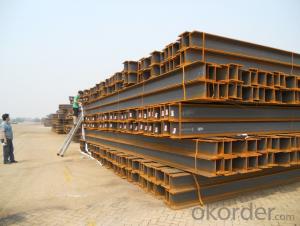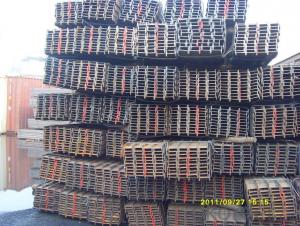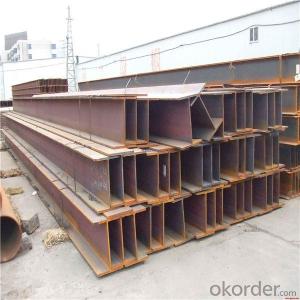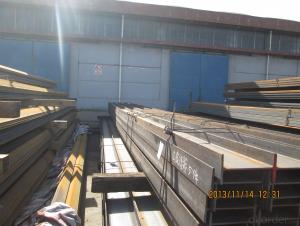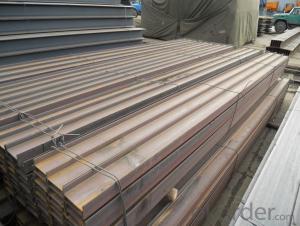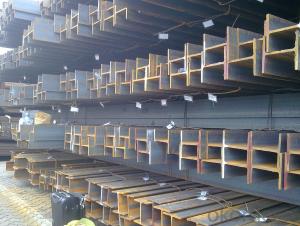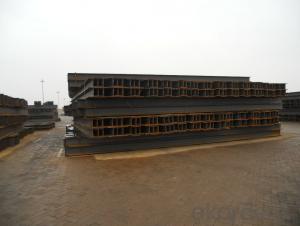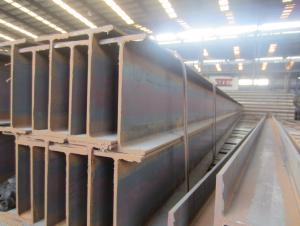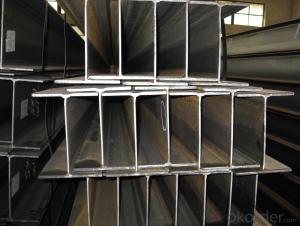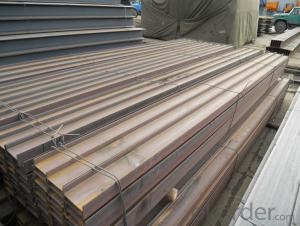H Beam with Good Quality and Competitive Prices Made in China for Sale
- Loading Port:
- Tianjin
- Payment Terms:
- TT OR LC
- Min Order Qty:
- 25 m.t.
- Supply Capability:
- 20000 m.t./month
OKorder Service Pledge
OKorder Financial Service
You Might Also Like
Specification
Product Description:
OKorder is offering H Beam with Good Quality and Competitive Prices Made in China for Sale at great prices with worldwide shipping. Our supplier is a world-class manufacturer of steel, with our products utilized the world over. OKorder annually supplies products to European, North American and Asian markets. We provide quotations within 24 hours of receiving an inquiry and guarantee competitive prices.
Product Applications:
H Beam with Good Quality and Competitive Prices Made in China for Sale are ideal for structural applications and are widely used in the construction of buildings and bridges, and the manufacturing, petrochemical, and transportation industries.
Packaging & Delivery:
Packaging Detail: products are packed in bundle and then shipped by container or bulk vessel, deformed bar is usually naked strapping delivery, when storing, please pay attention to moisture proof. The performance of rust will produce adverse effect.
Each bundle weight: 2-3MT, or as required
Payment term: TT or L/C
Delivery Detail: within 45 days after received advanced payment or LC.
Label: to be specified by customer, generally, each bundle has 1-2 labels
Trade terms: FOB, CFR, CIF
FAQ:
Q1: Why buy Materials & Equipment from OKorder.com?
A1: All products offered byOKorder.com are carefully selected from China's most reliable manufacturing enterprises. Through its ISO certifications, OKorder.com adheres to the highest standards and a commitment to supply chain safety and customer satisfaction.
Q2: How soon can we receive the product after purchase?
A2: Within three days of placing an order, we will begin production. The specific shipping date is dependent upon international and government factors, but is typically 7 to 10 workdays.
Q3: How do we guarantee the quality of our products?
A3: We have established an advanced quality management system which conducts strict quality tests at every step, from raw materials to the final product. At the same time, we provide extensive follow-up service assurances as required.
Images:
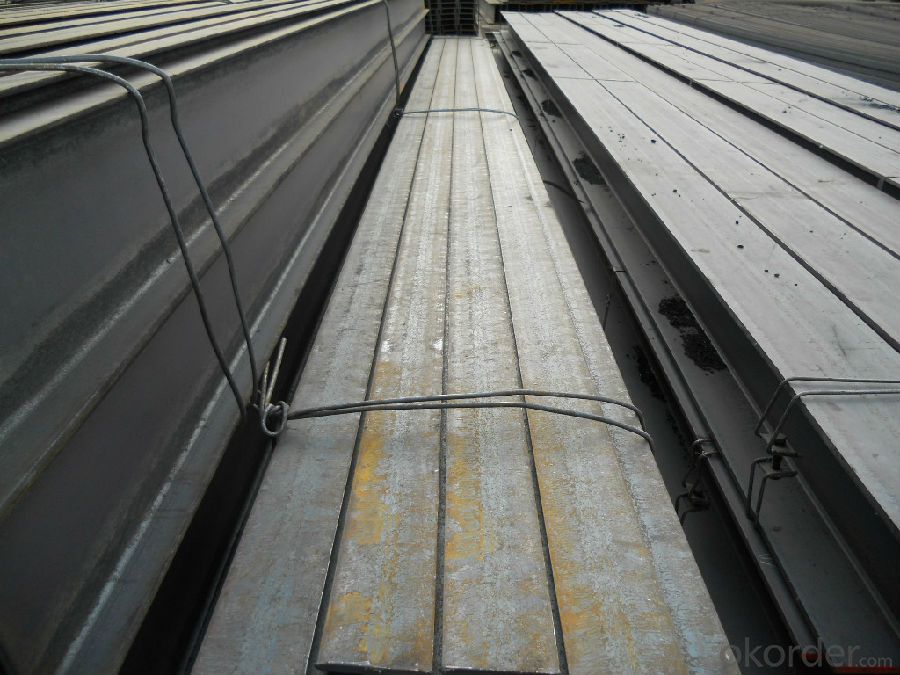
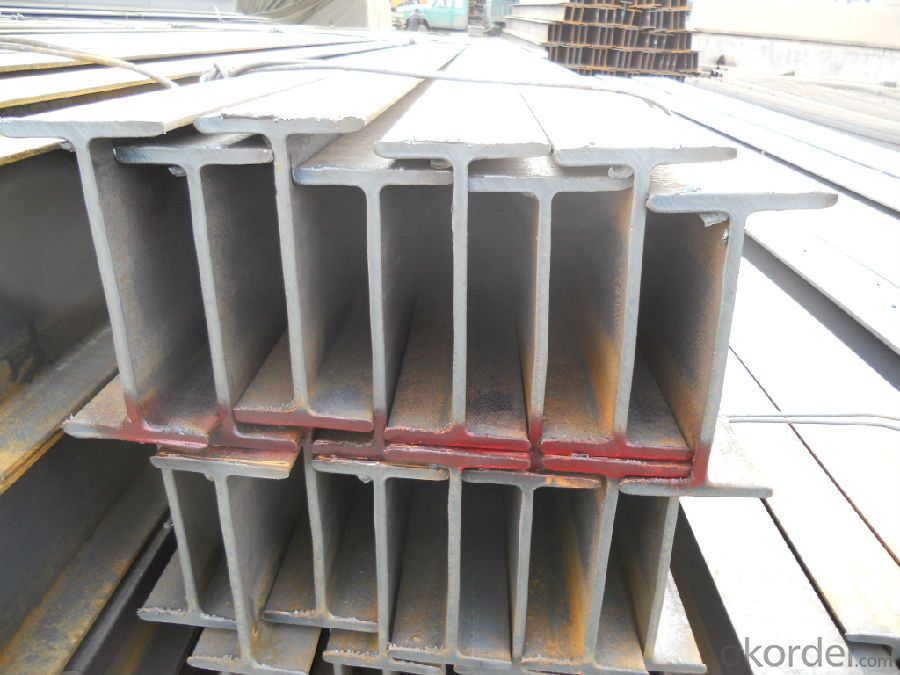
- Q: What are the different grades of Steel H-Beams available?
- The different grades of Steel H-Beams available depend on the specific requirements and standards set by different steel manufacturers and industry organizations. Some common grades include ASTM A36, ASTM A572, ASTM A992, and ASTM A588. These grades have varying mechanical properties, such as yield strength, tensile strength, and corrosion resistance, which make them suitable for different structural applications. It is important to consult the steel manufacturer or supplier to determine the specific grades available and their corresponding properties.
- Q: What are the typical weight and mass of steel H-beams?
- The weight and mass of steel H-beams can vary depending on their specific dimensions and specifications. Steel H-beams are generally recognized for their strength and durability. The weight of an H-beam is typically measured in pounds per foot, while the mass is usually expressed in kilograms per meter. As an approximate estimation, an H-beam with a standard size of 6 inches by 6 inches and a length of 20 feet can weigh approximately 112 pounds per foot or roughly 166 kilograms per meter. It's important to note that this is just one example, and the actual weight and mass may differ based on the beam's specific dimensions and the manufacturer's specifications. It is crucial to consider that there are various sizes and types of steel H-beams available in the market, each with its own unique weight and mass. These can range from smaller beams used in residential construction to larger and heavier beams utilized in industrial or commercial projects. Therefore, it is essential to consult the manufacturer's specifications or engineering guidelines to obtain accurate weight and mass information for a specific steel H-beam.
- Q: Can steel H-beams be used for supporting modular building systems?
- Indeed, modular building systems can be supported by steel H-beams. Renowned for their exceptional strength and capacity to bear heavy loads, steel H-beams are well-suited for imparting structural support to modular buildings. Through proficient weight and load distribution, they guarantee both stability and safety of the building system. Additionally, steel H-beams offer the advantage of effortless fabrication and customization, enabling them to cater to the precise needs of any modular building system. This versatility has contributed to their widespread popularity within the construction industry.
- Q: How do steel H-beams perform in extreme weather conditions such as hurricanes or cyclones?
- Steel H-beams are known for their exceptional strength and durability, making them a popular choice for various construction applications, including in areas prone to extreme weather conditions like hurricanes or cyclones. When it comes to withstanding the forces exerted by such weather events, steel H-beams have proven to be highly reliable. The unique structural design of H-beams, with their flanges and web, allows them to distribute loads evenly along their length, making them resistant to bending or buckling. This structural integrity enables H-beams to withstand the strong winds and forces generated by hurricanes or cyclones. In extreme weather conditions, such as hurricanes, the wind speed can reach incredibly high velocities. The aerodynamic design of H-beams, with their streamlined shape and minimal surface area, helps reduce wind resistance. This significantly decreases the chances of the beams being blown away or damaged during the storm. Additionally, steel H-beams have excellent corrosion resistance properties. They are often galvanized or coated with protective coatings, which prevent rust or deterioration caused by moisture, a common occurrence during hurricanes or cyclones. This ensures that the structural integrity of the beams remains intact even after prolonged exposure to extreme weather conditions. Moreover, steel H-beams possess a high load-bearing capacity, allowing them to support heavy loads such as roofs, walls, or floors. This strength is particularly crucial during hurricanes or cyclones, where the beams must withstand not only the wind forces but also the weight of debris or falling objects. Overall, steel H-beams are engineered to perform exceptionally well in extreme weather conditions such as hurricanes or cyclones. Their strength, durability, resistance to bending and buckling, corrosion resistance, and high load-bearing capacity make them a reliable choice for construction in areas prone to such weather events.
- Q: What is a steel H-beam?
- A steel H-beam, which is also referred to as H-section or I-section, is a type of structural beam that is made out of steel and has a shape that resembles the letter "H". This beam is extensively utilized in construction and civil engineering projects because of its remarkable strength and versatility. The primary purpose of the H-beam is to evenly distribute the weight or load across its horizontal flanges, which are connected by a vertical web. This particular design offers exceptional load-bearing capabilities and enables structures to have longer spans and enhanced stability. H-beams are commonly employed in buildings, bridges, highways, and other infrastructure projects to provide support for heavy loads and resist bending or twisting forces. The manufacturing process of the steel H-beam involves either hot rolling or welding, and it can be obtained in various sizes and dimensions to suit different applications.
- Q: Model H is 580*280*12*14. How much is the theoretical weight of the steel?It's better to list the complete formula, thank you!
- Sectional area=(H+2T =(TW)2bt 580×2×14)+2×280×12×14 = 144.64cm2
- Q: What are the considerations for designing with steel H-beams?
- When designing with steel H-beams, there are several considerations to keep in mind. Firstly, it is important to consider the structural requirements and load capacity of the H-beams. This includes understanding the expected loads and forces that the beams will bear, as well as the span and spacing requirements. Secondly, the dimensions and properties of the H-beams must be carefully chosen to ensure they meet the design specifications. This involves considering the beam's depth, width, and thickness, as well as the material grade. Additionally, the connection details between the H-beams and other structural elements need to be carefully designed to ensure proper load transfer and structural integrity. This includes selecting appropriate fasteners and welding techniques, as well as providing adequate bracing and reinforcement. Furthermore, factors such as fire resistance, corrosion protection, and seismic design considerations should also be taken into account when designing with steel H-beams. Overall, designing with steel H-beams requires a thorough understanding of structural engineering principles, material properties, and design codes to ensure a safe and efficient structure.
- Q: Can steel H-beams be used for gymnasiums?
- Yes, steel H-beams can be used for gymnasiums. Steel H-beams are commonly used in construction due to their high strength and durability. They provide structural support and can withstand heavy loads, making them suitable for gymnasiums that require large open spaces and have high ceilings. Additionally, steel H-beams allow for flexible and customizable designs, making them a popular choice for gymnasium structures.
- Q: What are the different types of steel H-beam connections used in retail buildings?
- There are several types of steel H-beam connections commonly used in retail buildings, including bolted connections, welded connections, and moment connections. Bolted connections involve using bolts to secure the beams together, providing a strong and versatile connection. Welded connections involve welding the beams together, creating a seamless and rigid connection. Moment connections are used to transfer bending moments between beams, ensuring structural stability and resistance to lateral forces. The specific type of connection used in a retail building depends on factors such as load requirements, design preferences, and construction regulations.
- Q: What are the common fire protection measures for steel H-beams?
- Common fire protection measures for steel H-beams include applying intumescent coatings, installing fire-resistant cladding, using fire-resistant insulation materials, and incorporating fire suppression systems such as sprinklers or fire curtains. These measures aim to delay the structural failure of steel beams during a fire, allowing for sufficient time for evacuation and firefighting efforts.
Send your message to us
H Beam with Good Quality and Competitive Prices Made in China for Sale
- Loading Port:
- Tianjin
- Payment Terms:
- TT OR LC
- Min Order Qty:
- 25 m.t.
- Supply Capability:
- 20000 m.t./month
OKorder Service Pledge
OKorder Financial Service
Similar products
Hot products
Hot Searches
Related keywords
